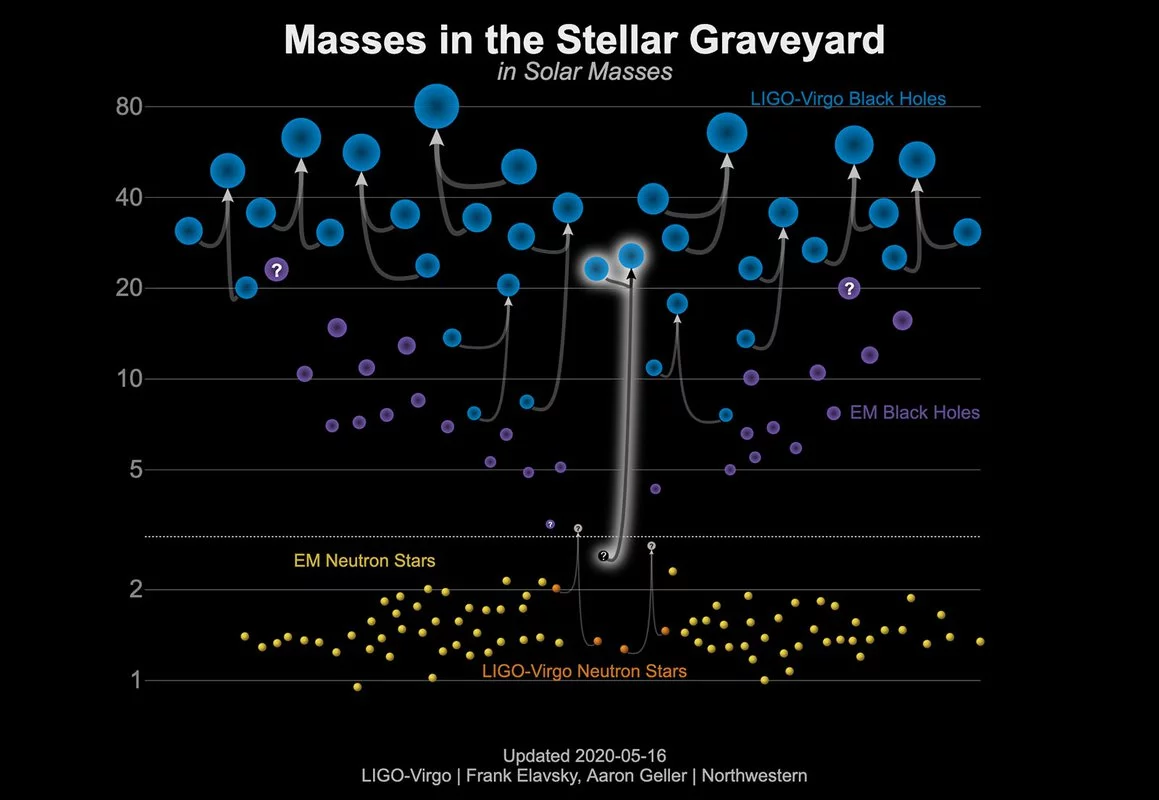The LIGO-Virgo collaboration has reported a very strange gravitational wave signal. Most of these come from mergers between two black holes or two neutron stars, but this signal appears to have come from a black hole swallowing some unknown object, with a mass that sits in a range thought to be empty.
It’s kind of amazing that something has gone from a Nobel Prize-worthy discovery to a seemingly mundane event in just five years, but that’s almost how it feels with gravitational waves. After all, dozens of these signals have now been detected since that very first one in 2015 – but scientists still have plenty to learn from them.
Gravitational waves are distortions in the very fabric of space and time, caused by powerful cosmic cataclysms. Detectors like LIGO and Virgo can pick up these signals as they wash over Earth, and scientists can analyze their signatures to determine what caused them.
Specifically, they can work out the mass of each object in the collision and tell what they were. If an object is more than five times the mass of the Sun, it was a black hole. Less than about 2.1 solar masses though, and it was most likely a neutron star.
Now, you’ll probably notice there’s a bit of a “mass gap” in the middle there. It’s kind of a reverse Goldilocks zone, too small to be a black hole but too big to be a neutron star. No astronomical objects have been found to exist within this range. That is, until now.
In August 2019, LIGO and Virgo detected a gravitational wave signal called GW190814. The event took place some 800 million light-years away from Earth, and the two objects that collided were found to have 23 solar masses and 2.6 solar masses.
The 23-solar mass object is undoubtedly a black hole – but what it swallowed is unknown, sitting squarely in that mass gap. And with the larger object being nine times more massive than the smaller one, this is the most extreme ratio for any observed gravitational wave event.

"The mass gap has been an interesting puzzle for decades, and now we've detected an object that fits just inside it," says Pedro Marronetti, of the National Science Foundation. "That cannot be explained without defying our understanding of extremely dense matter or what we know about the evolution of stars.”
So is it the most massive neutron star ever observed? That would stretch our understanding of the physics involved – after all, a recently-discovered neutron star of 2.17 solar masses was already described as “teetering on the edge of existence.”
Or was it the lightest-ever black hole? Although certainly unusual, this seems more likely. Small black holes are hypothesized to exist, and one may even have been found recently measuring just 3.3 solar masses.
Whatever it was, this detection could just be the beginning. Already there are other mass gap candidate events in LIGO-Virgo’s third observation run that need further study to be confirmed. And they’ll only get more sensitive in future.
"This is going to change how scientists talk about neutron stars and black holes," says Patrick Brady, a co-author of the study. "The mass gap may in fact not exist at all but may have been due to limitations in observational capabilities. Time and more observations will tell.”
The research was published in the Astrophysical Journal Letters.
Sources: Caltech, Max Planck Institute





